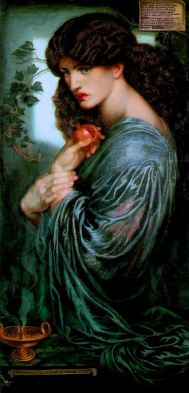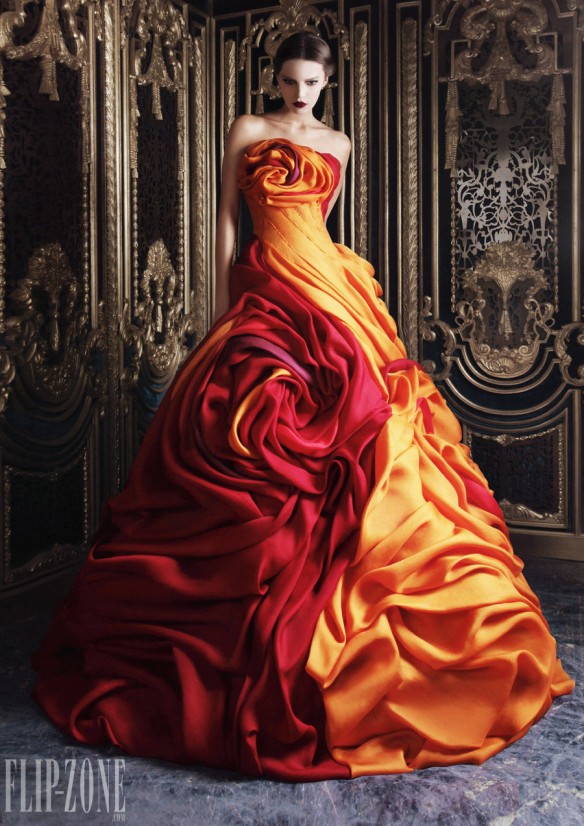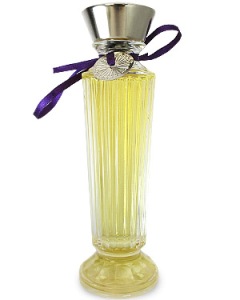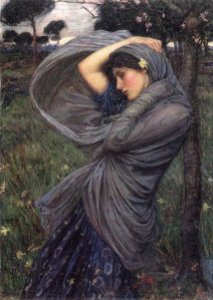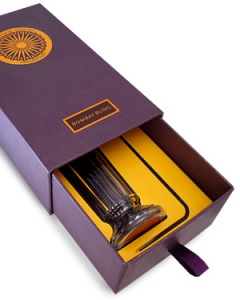Va-Va-Voom! Mohur has put on her ball gown and is ready for a gala! The new Mohur Extrait** de Parfum by Neela Vermeire Créations (“NVC”) takes the existing Eau de Parfum formulation up a notch in sophistication, richness, luxuriousness and creaminess. It is — quite simply — spectacular. **[UPDATE 10/20/13 – This article was originally written when the perfume was called Mohur Esprit de Parfum, but the name has subsequently been changed to just Mohur Extrait de Parfum. I believe legal and trademark issues were the reason. Consequently, I’ve changed this post to reflect the new name.]
Mohur Extrait de Parfum (hereinafter “Mohur Extrait” or “Extrait”) is a new concentration of Mohur and the very first pure parfum offered by Neela Vermeire. It will be released in early Fall of 2013. [Update: it will now be released in Winter 2013 or in 2014.] The perfume was recently shown at the Milan Esxence show, and a European friend got me a small vial. I don’t know if the Extrait has had any slight alteration in notes, or if it is exactly the same perfume in a greater concentration, but something about it feels a little different.
I’ve always felt a little badly for Mohur Eau de Parfum. Trayee is the mysterious, seductive older sister; Bombay Bling, the happy, innocent, playful, joyous baby sister. Mohur is the quiet, reserved, elegant one. Like many middle sisters, Mohur EDP always seemed a little overlooked and forgotten in the company of her much more exuberant or forceful sisters. I myself loved Mohur, but I was just a little more bouleversée by Trayee. While something about Mohur EDP stayed in my mind, inching its way further and further into my heart with time, it could never quite compete with the force of nature that is Trayee. Until now. Until Mohur Extrait de Parfum.
It may be useful to briefly refresh your memory of Mohur’s notes, at least for the Eau de Parfum. The incredibly long list — twenty-three ingredients in all — includes:
Top: Cardamom absolute, Coriander seed oil, Ambrette seed, Carrot, Black Pepper, Elemi oil;
Middle: Turkish rose oil, Moroccan Rose Absolute, Rose Accords 11%, Jasmine accord, Orris, Aubepin Flower [hawthorn], Almond milk notes, Violet Flower, Leather vitessence:
Bottom: Sandalwood, Amber, White Woods, Patchouli, Oudh Palao from Laos, Benzoin Siam [resin], Vanilla, Tonka bean.
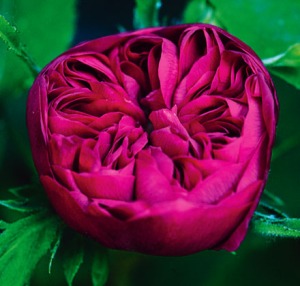 I tested Mohur Extrait de Parfum side by side with Mohur Eau de Parfum. One on each arm. Twice. The differences are merely of degree and are not substantial — but they are there. Mohur Extrait de Parfum opens with a considerably greater degree of sweetness. The roses are concentrated and heightened, tinged only subtly with the other notes, instead of sharing equal space with them. The flower is touched with carrots, followed then by violets, all atop a lightly ambered base with muted almond milk. There is a much stronger note up top of lightly powdered iris and a quiet hint of white woods. In contrast, Mohur Eau de Parfum has the rose note well mixed in with the other tonalities. The carrot accord is partnered side by side, but the rose never full dominates in quite the same way. There are also much more noticeable spices, pepper and elemi right at the front with the EDP. The violet note is considerably more subtle right at the start but, later, it deepens more and is a much more consistent vein throughout the Eau de Parfum in its subsequent development.
I tested Mohur Extrait de Parfum side by side with Mohur Eau de Parfum. One on each arm. Twice. The differences are merely of degree and are not substantial — but they are there. Mohur Extrait de Parfum opens with a considerably greater degree of sweetness. The roses are concentrated and heightened, tinged only subtly with the other notes, instead of sharing equal space with them. The flower is touched with carrots, followed then by violets, all atop a lightly ambered base with muted almond milk. There is a much stronger note up top of lightly powdered iris and a quiet hint of white woods. In contrast, Mohur Eau de Parfum has the rose note well mixed in with the other tonalities. The carrot accord is partnered side by side, but the rose never full dominates in quite the same way. There are also much more noticeable spices, pepper and elemi right at the front with the EDP. The violet note is considerably more subtle right at the start but, later, it deepens more and is a much more consistent vein throughout the Eau de Parfum in its subsequent development.
Mohur Eau de Parfum is also much sharper in its opening minutes. Now, I have never thought Mohur to have a sharp note whatsoever. Until I put on the Extrait de Parfum. Side by side, on both occasions, the EDP has a sharper, thinner aspect to the initial opening minutes. In contrast, Mohur Extrait was deeper, stronger, richer and with significantly increased sweetness. The Extrait also has, quite naturally, a greater sillage and power. We’re talking Fracas levels of potency if you apply a lot!
As time passed, other changes were perceptible, too. The Extrait seems more ambered and spicy. The woodsy notes and oud are stronger, though the latter is still not a significant part of Mohur for me. It is far too well-blended and sheer a note as a whole; it adds subtle depth to the fragrance — in both formulations — but I would never consider Mohur to be a real or hardcore oud fragrance by any means. With the Extrait de Parfum, I also detected subtle hints of the leathery undertone which has always been negligible for me in Mohur EDP. The latter seems more purely floral, much more violet infused and slightly milkier. It also feels as though there is less noticeable patchouli in the EDP, whereas it’s a plush, velvety, almost mossy companion to the sandalwood that begins to come out within the second hour of the Extrait.
Lastly, Mohur Extrait differs in terms of both sillage and longevity. I applied the same quantities of both fragrances from a dab vial. While the EDP became close to the skin about 4.5 hours in, the Extrait de Parfum became a skin scent after 8 hours. Mohur EDP lasted approximately 9.5 hours on me. The pure parfum concentration is, naturally, much stronger and lasted almost 13 hours on my perfume-consuming skin.
Again, the olfactory differences between the two versions seem, for the most part, to be very minor and just one of degree. But those differences somehow make Mohur Extrait de Parfum a much more sophisticated, more grown-up and regal version of the perfume in my mind. More importantly, they have taken away some of the wistfulness that seemed so much a part of Mohur EDP. Unlike her sisters, Mohur has never been a perfume that evoked India, one of my favorite places on earth. In my review of the EDP, I consistently compared Mohur to one of the slightly melancholy, pale beauties of Dante Gabriel Rossetti’s Pre-Raphaelite paintings, or to an ancient princess of long-ago, mourning a lost love. She was Iseult of Tristan et Iseult, Guinevere, or one of the countless maidens of legend whose beauty was tinged with loss.
Mohur Extrait de Parfum is different. The melancholic heart seems lessened; the spicy sandalwood, oud and woodsy foundation seems stronger; the milky opening notes much milder; and the roses significantly sweeter and more concentrated. The violets which underscored the Eau de Parfum and which evoked, in my mind, faint parallels to Guerlain‘s 1906 masterpiece, Après L’Ondée are still very much a presence in Mohur Extrait. They are definitely more concentrated at the very top of the Extrait, particularly in the first thirty minutes. Yet, the note doesn’t create quite the same sort of haunting, brooding, and bittersweet thread throughout the long-term development and life of Mohur Extrait as it did in Mohur EDP.
The problem in attempting to ascertain minor differences is that Mohur is a brilliantly blended perfume in both formulations. Its prismatic nature means that the minor differences I smell today may not be the same ones I smell tomorrow, if I even smell them at all. When perfumes throw off different notes like reflective rays off a crystal chandelier hit by sunlight, the facets are sometimes mutable. But I definitely sense a difference in degree that goes beyond mere richness and depth.
The best way that I can explain the differences in feel, to me, between the two perfumes is through photos. The woman in the new Mohur Extrait starts off as:

Sarah Jessica Parker in Vogue, March 2010. Dress: Dior Haute Couture. Photo: Mario Testino. Source: Vogue.com
She then turns into:
She is no longer quite the restrained, reserved, quietly elegant, haunting sister, living in the shadows of her more forceful sisters. Mohur is now full diva, a glamourous star in her own right, luxuriating in her femininity and richness, dripping with opulence. The wistful princess has now become a powerful queen. She may well rule them all.
[ED. Note: You can find a review for the new, upcoming Neela Vermeire perfume, Ashoka, which will come out at the same time as Mohur Extrait here.]


